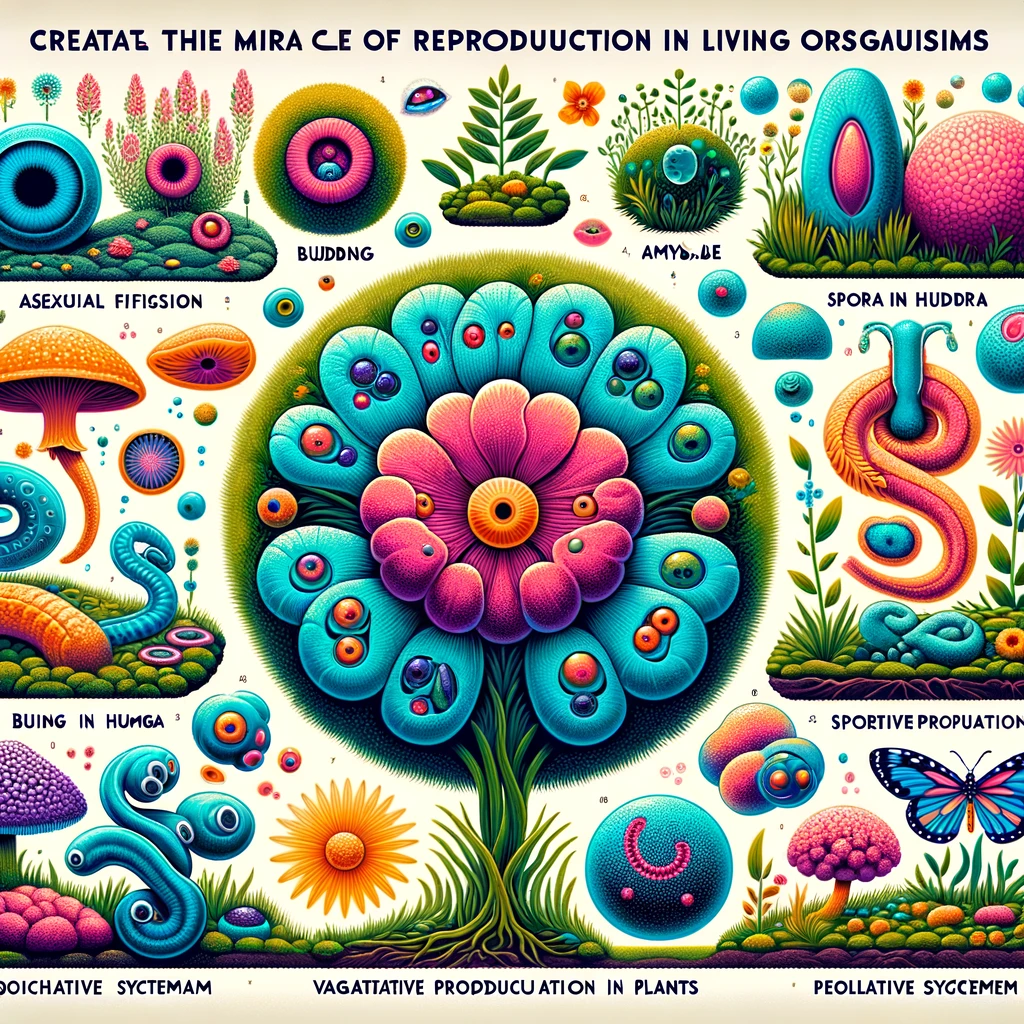
Unlocking the Secrets of Reproduction: Essential Life Processes for Class 10 Science

The Wonders of Reproduction in Living Organisms
Introduction
Reproduction is a fundamental biological process that allows living organisms to produce new individuals, ensuring the survival and continuity of species. This chapter explores the various reproductive strategies employed by different organisms, highlighting the complexity and diversity of life.
Section 1: Asexual Reproduction
Asexual reproduction involves a single organism or cell dividing to produce offspring that are genetically identical to the parent, known as clones.
Types of Asexual Reproduction
- Binary Fission: Seen in unicellular organisms like bacteria and amoebae, where the cell divides into two equal parts.
- Budding: Involves the formation of a new organism from a small projection on the parent, common in yeast and Hydra.
- Spore Formation: Spores are produced by the parent organism, which can grow into new individuals under favorable conditions, observed in fungi and some plants.
- Vegetative Propagation: A method of plant reproduction that involves the production of new plants from stems, roots, or leaves.
Section 2: Sexual Reproduction
Sexual reproduction involves the fusion of male and female gametes, resulting in offspring with genetic material from both parents, contributing to genetic diversity.
Flower Structure and Pollination
- Detailed explanation of the parts of a flower and their roles in reproduction, including the process of pollination, leading to fertilization.
Human Reproductive System
- Overview of the male and female reproductive systems, the process of gamete formation, fertilization, and development of the embryo.
Section 3: Reproductive Health
Understanding reproductive health is crucial for the well-being of individuals and the planning of families.
Importance of Reproductive Health
- Discussion on the significance of reproductive health education, prevention of sexually transmitted diseases, and the availability of reproductive health services.
Conclusion
The study of reproduction not only provides insights into the mechanisms that ensure the continuation of species but also underscores the importance of preserving biodiversity and maintaining healthy ecosystems.
Call to Action
Engage in further research and discussions about the significance of reproductive processes in both plants and animals. Explore the ethical, social, and environmental implications of reproductive technologies and health policies.